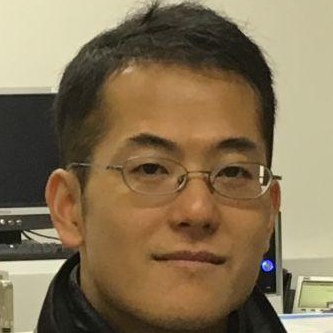State-of-the-Art Functional Materials and Nanomaterials in Asia 2023-2024
A special issue of Materials (ISSN 1996-1944).
Deadline for manuscript submissions: 20 October 2024 | Viewed by 12590
Special Issue Editors
Interests: superhydrophobicity; hydrophobic and superhydrophobic surfaces; ice-phobicity; anti-icing; hydrophilicity; laser ablation in liquid; nanomaterials and their characterization; thin films and coatings; anticorrosive coatings on aluminum; conversion coatings on aluminum; chemiresistive gas sensors; semiconductor nanoparticles
Special Issues, Collections and Topics in MDPI journals
Interests: high-power laser excitation; pulsed laser ablation; laser spectroscopy; nonlinear optics of dyes and crystals; synthesis and characterization of nanomaterials; photocatalysis; biomedical applications of nanoparticles; surface and sensoric properties of nanostructures
Special Issues, Collections and Topics in MDPI journals
Interests: laser material processing; laser ablation in liquids; plasmonics; optical sensors
Special Issues, Collections and Topics in MDPI journals
Interests: nanomaterials; plasmonics; photocatalysis; pulsed laser ablation in liquid; energy and environmental applications
Special Issues, Collections and Topics in MDPI journals
Special Issue Information
Dear Colleagues,
After our successful first volume of the Special Issue “State-of-the-Art Functional Materials and Nanomaterials in Asia 2021–2022”, we have decided to make a series of special issues which aims to provide a comprehensive overview of state-of-the-art of functional materials and nanomaterials in Asia. We invite research papers that will consolidate our understanding in this area. The Special Issue will publish full research articles and systematic reviews. Potential topics include, but are not limited to, the following research areas:
- Synthesis of nanomaterials through novel methods;
- Design and synthesis of molecular precursors for nanomaterials;
- Colloidal synthesis of 0D nanoparticles (metal, oxides, sulfides, semiconductors, and so on);
- 2D materials, 1D nanofibers, and special nanostructured materials;
- Nanostructured materials or composites for photocatalysis and electrocatalysis;
- Fabrication of nanomaterials-based devices (solar cells, LEDs, batteries, supercapacitors, gas and light sensors, transistors, etc.);
- In situ technology to investigate the reaction mechanism of nanomaterials in potential applications.
It is our pleasure to invite you to submit manuscripts on the subject “State-of-the-Art Functional Materials and Nanomaterials in Asia 2023–2024” for this Special Issue. Full papers and communications, as well as comprehensive reviews, are welcome. Please feel free to contact us, the guest editors, in case of further questions.
Prof. Dr. Sergei Kulinich
Dr. Valery A. Svetlichnyi
Dr. Aleksandr Kuchmizhak
Dr. Mitsuhiro Honda
Guest Editors
Manuscript Submission Information
Manuscripts should be submitted online at www.mdpi.com by registering and logging in to this website. Once you are registered, click here to go to the submission form. Manuscripts can be submitted until the deadline. All submissions that pass pre-check are peer-reviewed. Accepted papers will be published continuously in the journal (as soon as accepted) and will be listed together on the special issue website. Research articles, review articles as well as short communications are invited. For planned papers, a title and short abstract (about 100 words) can be sent to the Editorial Office for announcement on this website.
Submitted manuscripts should not have been published previously, nor be under consideration for publication elsewhere (except conference proceedings papers). All manuscripts are thoroughly refereed through a single-blind peer-review process. A guide for authors and other relevant information for submission of manuscripts is available on the Instructions for Authors page. Materials is an international peer-reviewed open access semimonthly journal published by MDPI.
Please visit the Instructions for Authors page before submitting a manuscript. The Article Processing Charge (APC) for publication in this open access journal is 2600 CHF (Swiss Francs). Submitted papers should be well formatted and use good English. Authors may use MDPI's English editing service prior to publication or during author revisions.
Keywords
- advanced materials
- novel nanomaterials
- molecular nanostructures
- physical, chemical, and biological methods for nanomaterial preparation
- optical, photovoltaic, catalytic, sensing, antibacterial properties
- structure-properties relationship
- nanostructure
- nanotechnology









